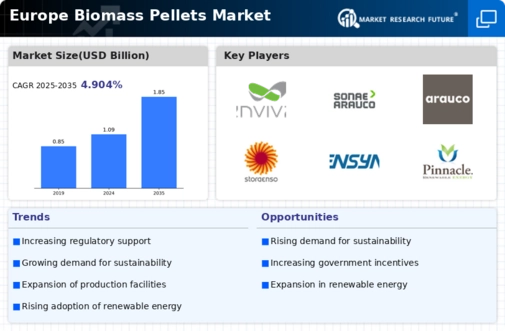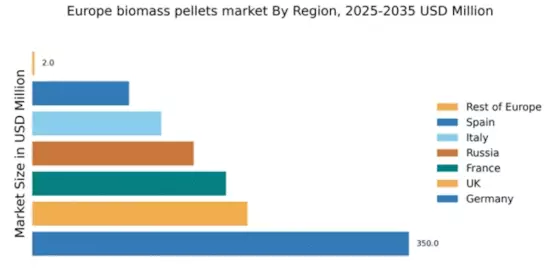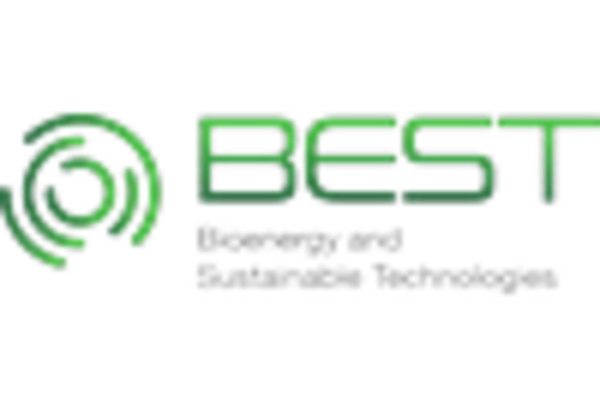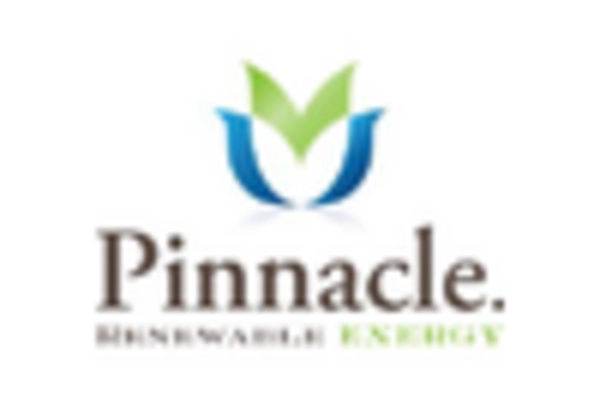Rising Energy Costs
The increasing costs of traditional energy sources in Europe are driving interest in alternative fuels, including biomass pellets. As fossil fuel prices fluctuate, consumers and industries are seeking more stable and sustainable energy options. The biomass pellets market appears to benefit from this trend, as biomass offers a cost-effective solution for heating and power generation. In 2025, the average price of natural gas in Europe is projected to remain high, prompting a shift towards biomass as a viable alternative. This transition is likely to enhance the market's growth, as businesses and households look for ways to mitigate energy expenses while adhering to environmental standards.
Growing Industrial Applications
The industrial sector in Europe is increasingly adopting biomass pellets as a sustainable energy source, which could significantly impact the biomass pellets market. Industries such as manufacturing, food processing, and paper production are exploring biomass as a means to reduce their carbon footprint. In 2025, it is estimated that the industrial demand for biomass pellets will account for a substantial share of the market, driven by corporate sustainability initiatives. This trend suggests that as more companies commit to reducing greenhouse gas emissions, the biomass pellets market will likely see increased demand from various industrial applications.
Enhanced Supply Chain Infrastructure
Improvements in the supply chain infrastructure for biomass pellets are facilitating market growth in Europe. Enhanced logistics, including transportation and storage solutions, are making it easier for producers to distribute pellets efficiently. In 2025, the establishment of dedicated biomass supply chains is expected to reduce costs and improve accessibility for consumers. This development may lead to a more robust biomass pellets market, as increased availability encourages wider adoption among residential and commercial users. Furthermore, partnerships between producers and distributors are likely to strengthen market dynamics, ensuring a steady supply of biomass pellets to meet growing demand.
Technological Advancements in Production
Innovations in biomass pellet production technology are enhancing efficiency and reducing costs, which may positively impact the biomass pellets market. Advanced processing techniques, such as torrefaction and pelletizing, are improving the quality and energy density of pellets. These advancements could lead to a more competitive market landscape, as producers can offer higher-quality products at lower prices. Furthermore, the integration of automation and data analytics in production processes is expected to streamline operations, potentially increasing output and reducing waste. As a result, the biomass pellets market may experience accelerated growth driven by these technological improvements.
Government Policies Promoting Renewable Energy
European governments are increasingly implementing policies that promote renewable energy sources, which is likely to bolster the biomass pellets market. Initiatives such as the European Green Deal aim to achieve carbon neutrality by 2050, creating a favorable regulatory environment for biomass energy. In 2025, it is anticipated that subsidies and incentives for biomass energy production will increase, encouraging investments in the sector. This supportive policy framework may lead to a surge in biomass pellet production and consumption, as stakeholders align their strategies with national and EU-wide sustainability goals.


















Leave a Comment